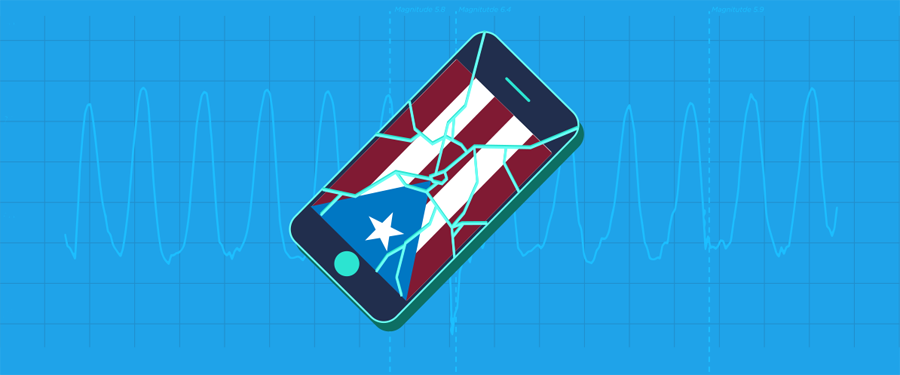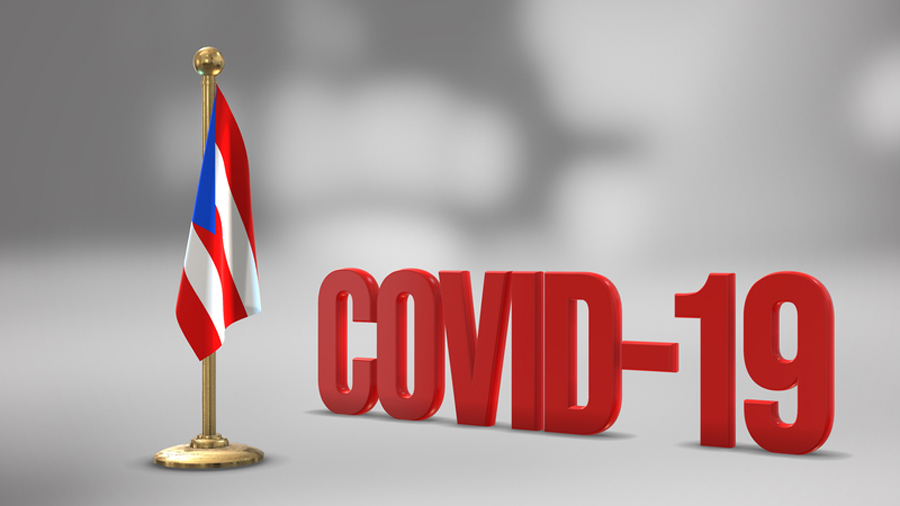Op-Ed: Power is key to mobile network recovery after earthquakes in P.R.

Mobile connectivity is crucial in the wake of a natural disaster as consumers seek to connect with loved ones and vital services. This is made all the more difficult by the fact that natural disasters can also wreak havoc on the infrastructure that supports that connectivity, including electrical power.
To support recovery efforts, we used Speedtest data from before and after the major recent earthquakes in Puerto Rico to see how mobile users were affected and where network connectivity currently stands.
While it was reported that power plants automatically shut off for safety following the quake on Jan. 6 at 6:32 a.m. local time, we do not see the same effect to mobile networks during that time as we did when power plants were then reportedly damaged in the Jan. 7 quake that struck at 4:24 a.m. local time.
Not all power plants were yet fully online by the time of the quake on Jan. 11 at 8:54 a.m. Electricity is essential to power cellular networks and not all cell sites have on-site power generators. We explore the various impacts of these power outages below.
Signal measurements and test volumes dropped after Tuesday’s quake
An hourly timelapse from the time before the first major earthquake on Jan. 6, through the second (Jan. 7) and third (Jan. 11) show the number of passive signal measurements from Android devices on the island of Puerto Rico.

We see a similar pattern of scans throughout the period, but the volume of samples declines following each of the three quakes.

Embedded tests also dropped off after the Jan. 7 earthquake. These come from devices (including: routers, gateways, modems, test and measurement devices and IoT Devices) that use Speedtest Powered to monitor connectivity by running a Speedtest, usually on a regular schedule. Except when the power is out.
No service status jumped after Tuesday’s quake

The proportion of scans and devices with no service in Puerto Rico show a large jump after the earthquake on Jan. 7 compared with the time period following the Jan. 6 quake. This shows that the real impact to mobile networks was a result of the quake on Jan. 7, likely because of power outages, and that networks were slowly recovering in the days after.
It looks as though scans and devices with no service were trending upward following the quake on Jan. 11 as well, though full data was still trickling in as this article was being written.
Battery level fell when devices were disconnected from power
For signal to matter, a device needs to have battery or the ability to charge. We used Speedtest data to analyze the proportion of devices that were connected to power during a coverage scan during the month of January.

Before and after the earthquake on Jan. 6, we see a fairly consistent daily pattern where between 30% and 85% of devices are connected to power during a scan. Immediately following the quake on Jan. 7, there is a sharp drop in devices connected to power.
The pattern had still not fully recovered when the third major quake hit on the morning of Jan. 11. There also appeared to be a longer than average dip in devices connected to power immediately following Saturday’s quake, but the pattern looks to be normalizing in the days since.
The disruption in devices connected to power after the Jan. 7 quake then affected average battery life of unplugged devices. This drop in average battery level reflects devices that had been charging when the power went out. We can also see that the average battery level didn’t return to a normal cycle until Jan. 10.

While these battery observations may appear straight-forward, they are important to highlight because they illuminate the cascading connectivity challenges that communities face in times of crisis.
Natural disasters can happen anywhere. In places like Puerto Rico, where the power grid is still suffering from the effects of Hurricane Maria, the effects of additional natural disasters on critical mobile networks can be especially challenging. Full power was expected to have been restored to the island on Sunday.
At Ookla, we share data pro bono in times of need that can help assist recovery in a number of ways. If you are an operator or regulator assisting with rebuild efforts in Puerto Rico that could use Ookla data to aid your immediate efforts, please inquire for more information.
Author Isla McKetta is head of content at Ookla.











